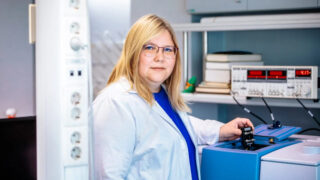Members

Head of the research team
Publications
Projects
Recognitions
“Top Viewed Article” published in Advanced Syntesis and Catalysis (A. Krech et al. https://doi.org/10.1002/adsc.202300939)
Order of the White Star, 4th Class, of the Republic of Estonia
Researcher of the Year at Tallinn University of Technology